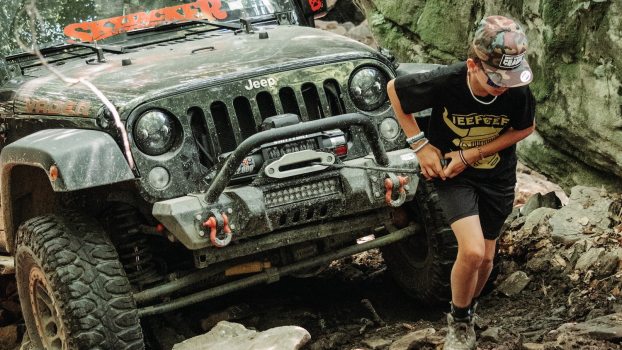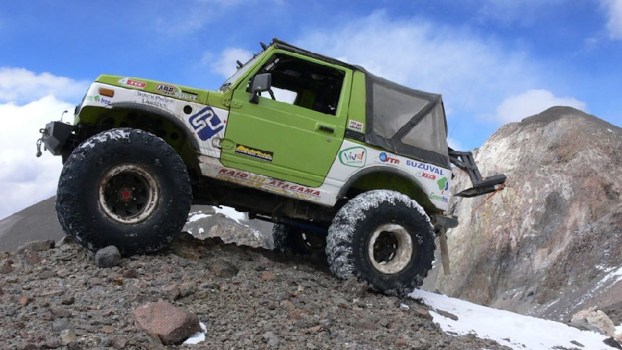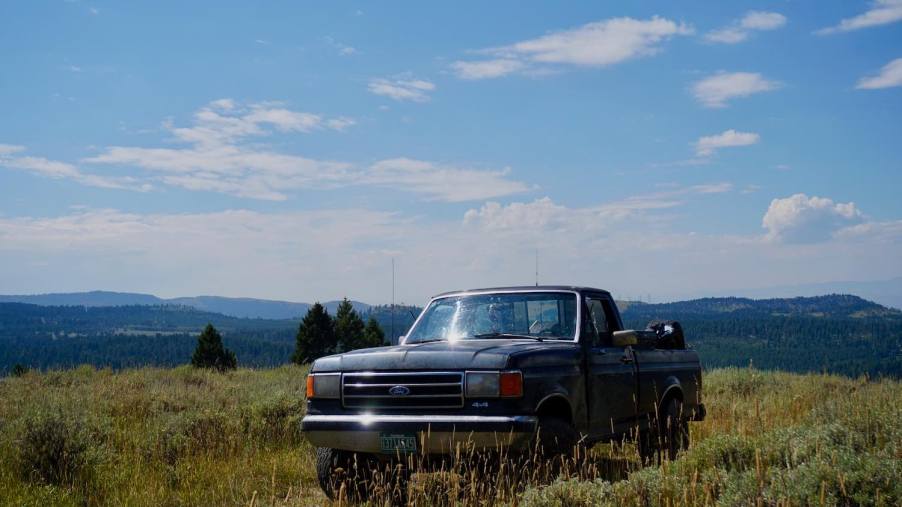
Can You Off-Road in an Old Truck (Or Vintage SUV)?
“They must hate you so much!” My copilot laughed as my truck crested a Montana mountaintop via a four-wheel-drive trail. A new Ford F-150 Raptor, a Toyota Tundra TRD Pro, and two lifted Ram trucks were parked in a circle on the summit. The drivers of the $300,000+ in new trucks stared at me and my $1,500, 1988 Ford F-150. I lifted a hand in a silent salute, then continued down the trail. I’ll admit I’m biased, but I’d argue that you can absolutely go off-roading in old lifted trucks or vintage SUVs. But if you’re off road in a cheaper vehicle, it’s doubly important that you know what you’re doing.
Slow and steady wins the race
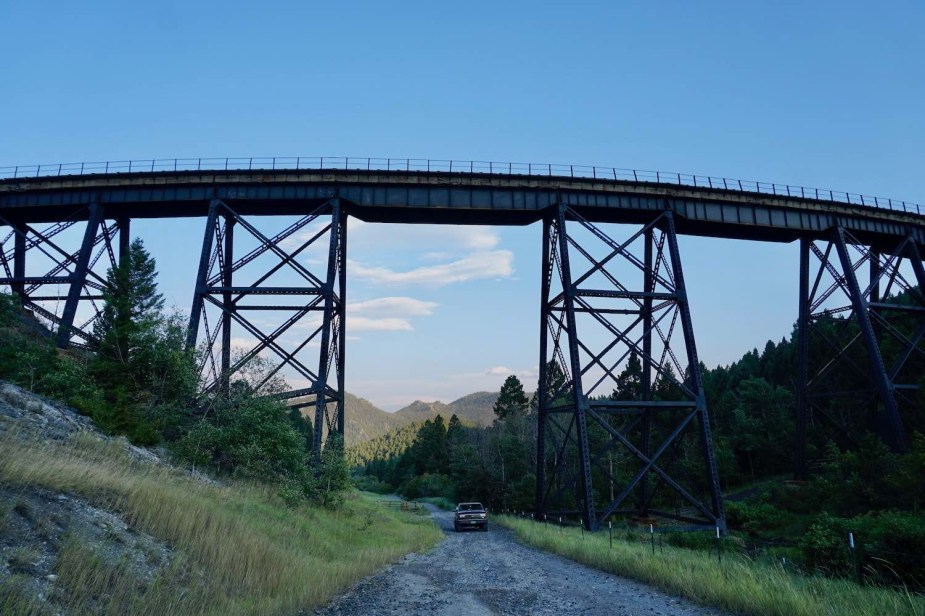
“Lesson one, ready?” My friend Joey nodded her head. She’d just bought an old Toyota truck but never been off-roading. She’d heard I was driving my 1988 Ford F-150 across the country, and off-roading along the way. So she’d sought me out to show her how to take an old lifted truck four-wheeling. I shifted into 4WD Lo, released the clutch, and crawled along the dirt road.
She said, “I’ve seen you drive in town, I know you like to go faster than this.”
I smiled, “This is off-roading. Out here, my motto is ‘Drive as slow as possible, as fast as necessary.'”
I’ll admit I stole the motto from the experts who drove vintage Land Rover SUVs in the Camel Trophy off-roading race in the 1980s and 1990s. “As slow as possible; as fast as necessary” is an excellent mantra because it reminds you that in most off-road situations, speed is what will damage your vehicle or get you stuck. Moving fast taxes the worn suspension and powertrain of your cheaper off road vehicle. It also leaves you with less time to plan your route. Traversing a rutted road or a series of large rocks, you must plan your path to avoid bottoming out and getting stuck.
If you know which side of your vehicle your differential and your exhaust are on, traversing a high-clearance trail is like a chess game. You may find yourself with two wheels high on a bank for maximum clearance and need to plan when to cross the rocky, rutted road and climb the other bank before some upcoming piece of ledge. Flying down the same trail could doom you to “high centering” and getting hopelessly stuck.
I am a big fan of parking my truck and walking a highly technical section of the trail to plan my route. This is critical when you can’t see the trail’s surface from your driver’s seat, such as in low light or during a water fording.
But my motto has a second part. In certain conditions–such as sand, mud, and snow–a little momentum may prevent you from getting stuck. Sometimes, it is necessary to go faster.
One example is traversing dunes, which often requires very high speeds. This is why many brand new “desert running” 4WDs are built for high speeds and huge suspension travel. But factory-built “desert runners” are specially engineered for this purpose.
If you are off-roading in an old lifted truck or vintage SUV, I’d say avoid terrains such as dunes that require extreme speed. My rule of thumb, in a cheap off road vehicle, is that I’ll grab a couple of gears in 4Lo to get a run on a mud puddle or wet hill. But if I expect I would need to go into 4Hi and really gun the throttle to traverse a bit of terrain, it’s probably time to turn around and try another trail.
There’s no reason you can’t enjoy a day navigating two-track routes through a National Forest in your old truck–if you remember, “Slow as possible; fast as necessary.”
Know your escape plan
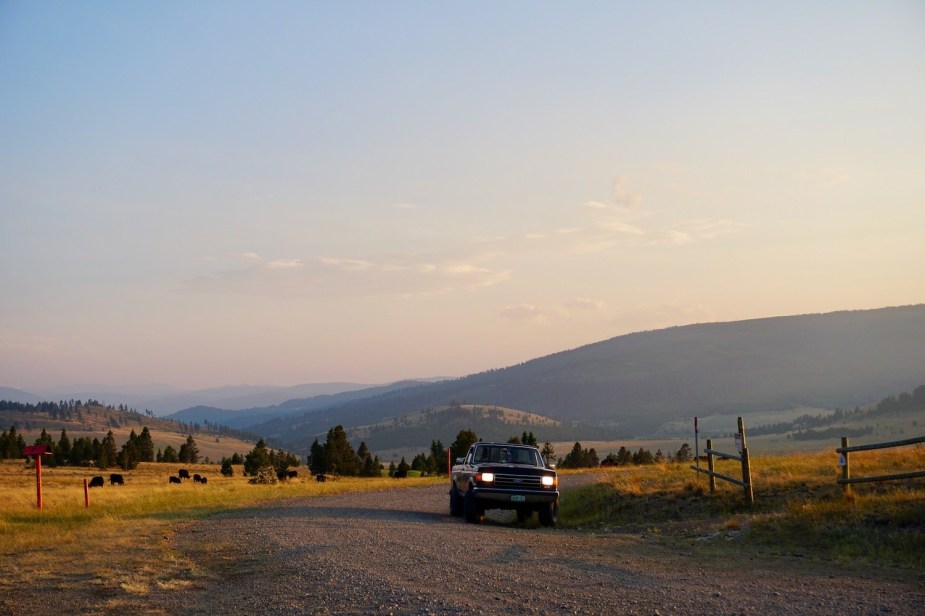
Joey wasn’t ready to invest in locking differentials or a bumper winch. But she’d wisely bought a compressor. So I showed her how to drop her tires down to 20 psi to improve traction by increasing the amount of tread on the ground. Then she shifted her transfer case into 4Lo and said, ”Ready to go!”
I asked, “What’s your escape plan?”
“What do you mean?”
“You’re in 4Lo and have your tires aired down. But you don’t have lockers or a winch. Now if you get stuck, you don’t have any more tricks up your sleeve.”
I’ll admit there are multiple schools of thought here. Some off-roaders like deploying every trick in their arsenal when they begin a trail. But if I am exploring a maintained dirt road, especially if I’m driving alone, I like to hold back some of my old lifted trucks capabilities. This might look like leaving it in 2WD as long as possible. Or leaving my tires at 35 psi because I know I can air them down later. This way, if the road suddenly worsens, I have an “escape plan.”
There’s also a psychological aspect to this strategy. If I am still in 2WD and come to a fork in the road, I might pick the well-maintained gravel road instead of the technical two-track. In old lifted trucks or vintage SUVs, this is probably wiser.
The other important part of your escape plan is what you’ll do if you get your cheap off road vehicle stuck. It’s important to travel with a second vehicle that could pull you out. Carry a tow strap rated for the weight of your vehicle. MaxTrax and Hi-Lift jacks are great tools to recover a stuck 4×4. But they are expensive. Even a shovel and some long planks may allow you to “build road” when you encounter a few feet of muddy trail that you can’t traverse otherwise. I’ve even seen off-roaders put a pile of branches beneath a spinning tire to gain traction and move forward. The most important tools for recovery are patience and a willingness to brainstorm a solution.
And in case you get truly stranded, it is critical that someone knows where you are and when you plan to return to cell service. I always tell someone where I’m going, even if my “itinerary” lists a dozen roads I might try. I also tell them when I’ll text them that I’m safely back on pavement (often giving myself a half-day margin, in case the trip just takes longer). Finally, I make it very clear to them that they are my backup and give them a good emergency phone number to report me missing. In National Forests, these numbers will be the nearest Ranger Station. Elsewhere, they might be the Game Warden branch of the State Police.
If your backup plan is waiting half a day for the reinforcements, you obviously need to be equipped to wait half a day–or even overnight. The amount of clothing, water, and food this will require depends on your environment. Be smart, don’t become a statistic.
Have fun
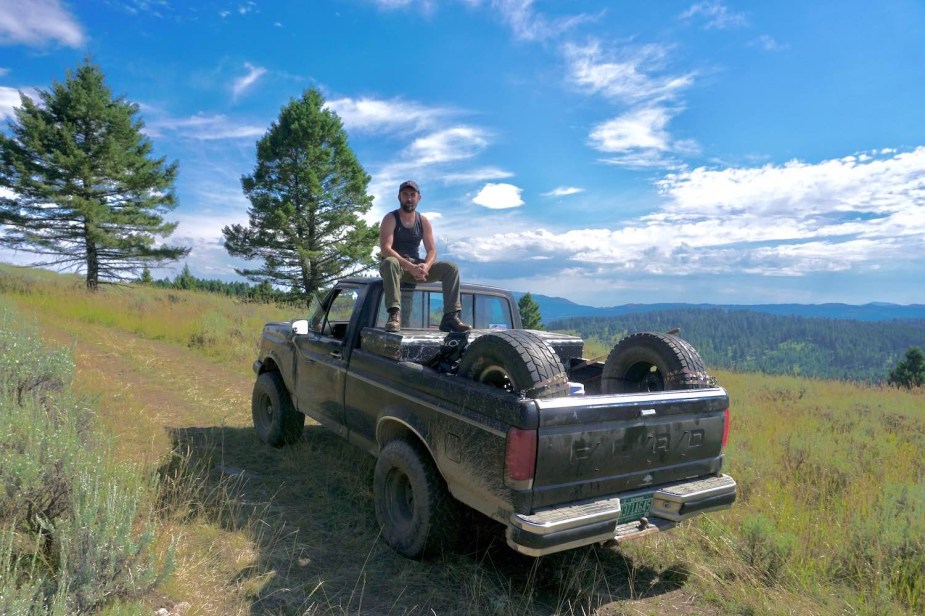
Taking old lifted pickup trucks or vintage SUVs off-road comes down to your mindset. If you’re trying to set an off-roading Guinness World Record, you should consider investing in a newer 4×4. But if you just want to load up some friends and spend the weekend wandering off-road trails and enjoying spectacular country, even a cheap off road vehicle is an excellent tool for the job.
Off-roading driver Ivan Stewart told Road and Track that you know you’ve found a good fit for both your vehicle and your capabilities when your pace feels “comfortable, accurate, and relaxed.” He recommended imagining you have a cup of coffee in a cup holder that you’re trying not to spill.
I’d take it one step further. Have an actual cup of coffee in your cup holder. Put on your favorite playlist (though you may need to download it beforehand). Take it slow. And have fun.
Next, you can see previous articles in my 1988 F-150 build/travel series. Part 1: Getting your money’s worth when you have a mechanic swap your clutch, Part 2: Can you salvage a rusty frame?, or Part 3: Are Radwood-era classics the worst vehicles to work on?
Or, you can watch TFL Truck take an 8th-gen F-150 off-road in the video below:
